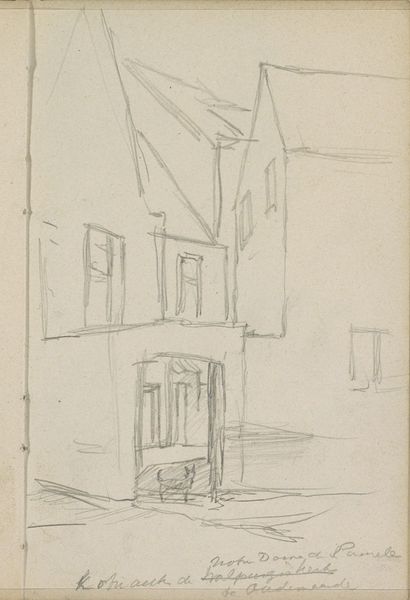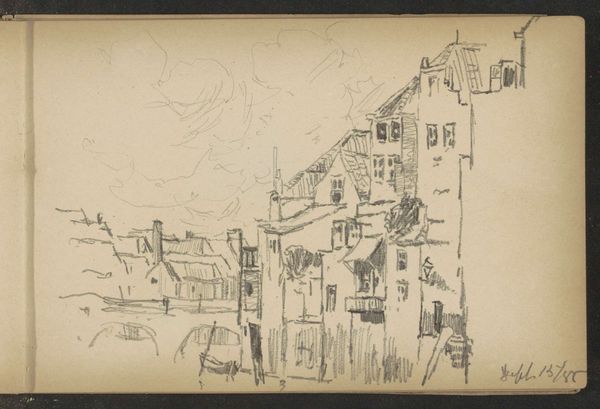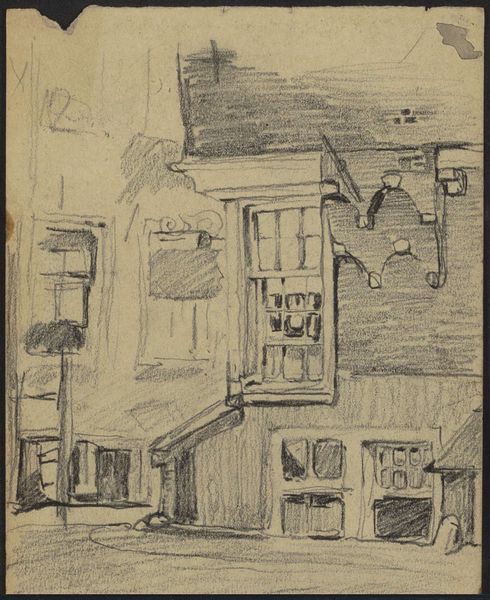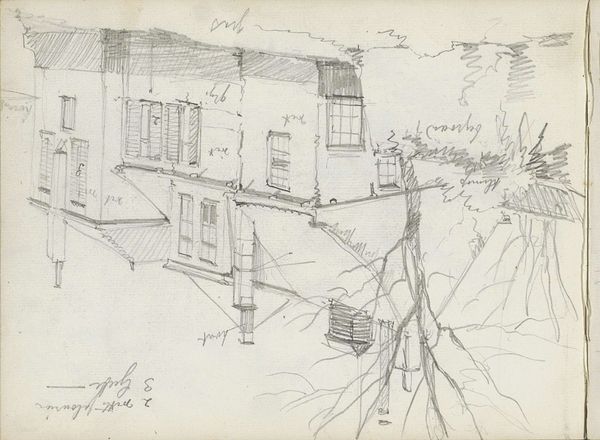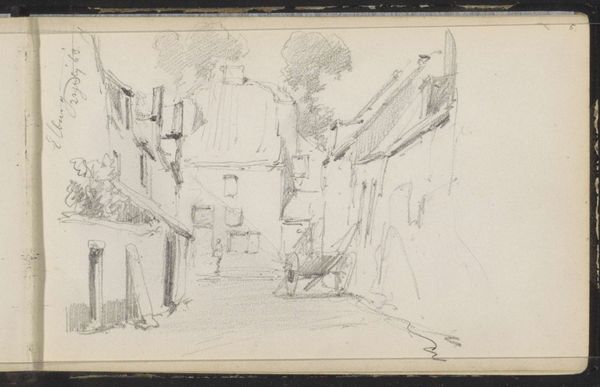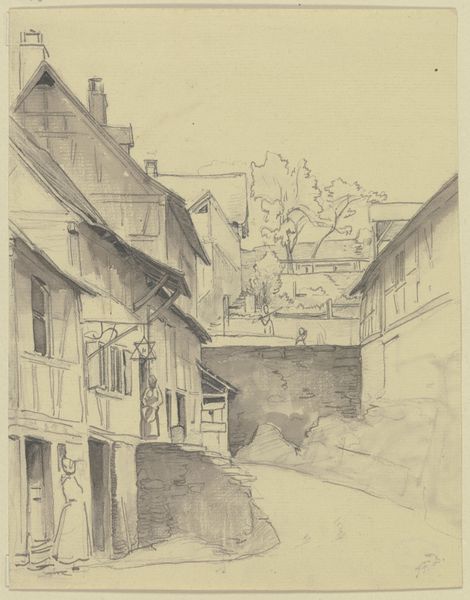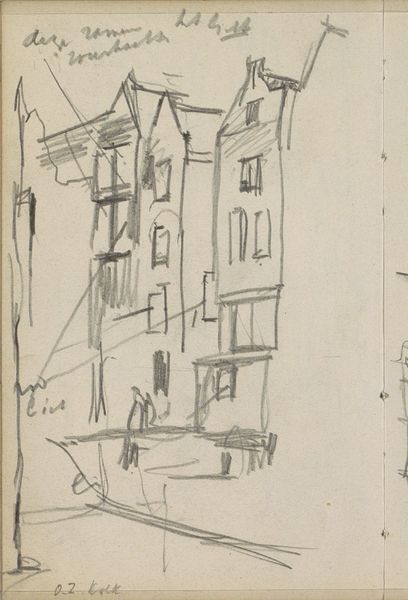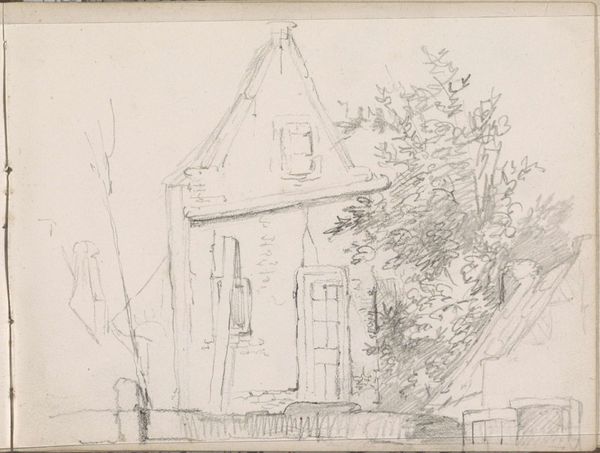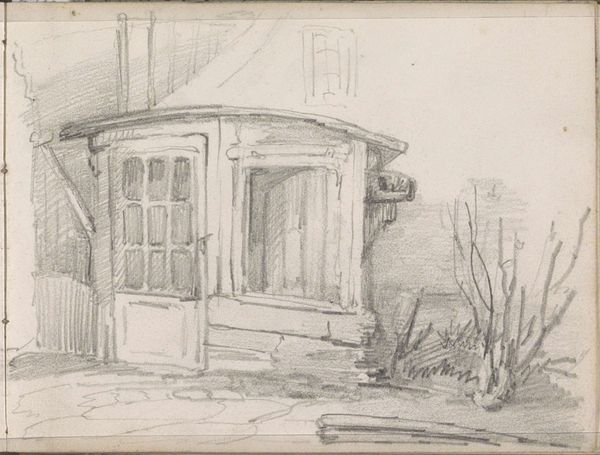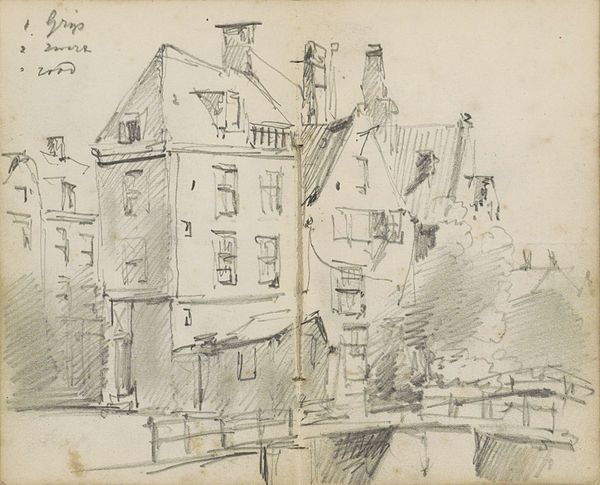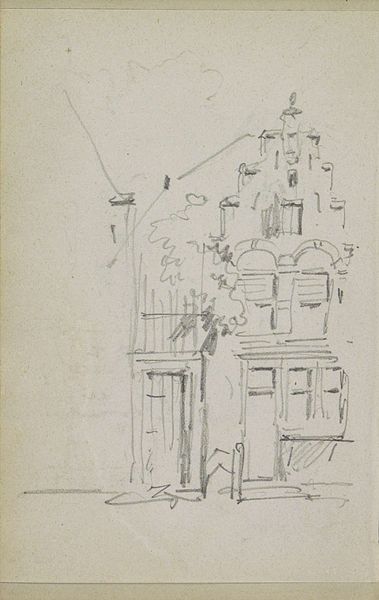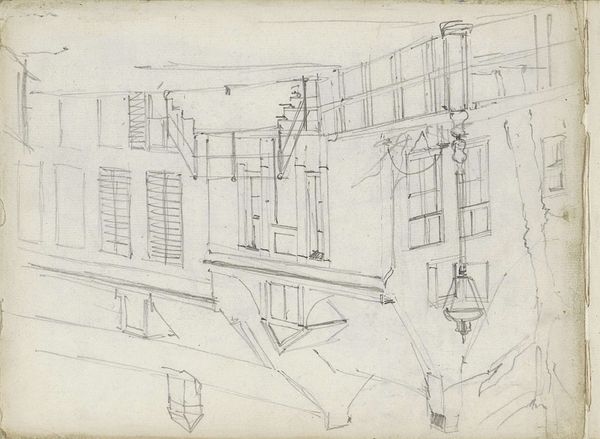
drawing, pencil, architecture
#
drawing
#
landscape
#
pencil
#
architecture drawing
#
cityscape
#
architecture
#
realism
Copyright: Rijks Museum: Open Domain
Curator: Welcome to the Rijksmuseum. We are standing before "Dorpsgezicht," a pencil drawing by Willem Koekkoek, created sometime between 1849 and 1895. What's your initial reaction? Editor: It’s delicate, almost hesitant. The composition feels like a series of layered sketches, focusing on architectural details but lacking a central point of focus. The values are so close that the depth of field becomes ambiguous and flattened, pushing back rather than pulling you in. Curator: The "flatness," as you say, may actually be one of Koekkoek's aims here. Look at how architectural drawings were employed by urban planners in the 19th century; this realism captures the aspirations, maybe even romanticization, of expanding village life. It mirrors that period's need to visually map the social spaces as they transformed. Editor: I can see that. Notice the subtle diagonal hatchings that define the rooftops and facades— they evoke the essence of each architectural structure. Semiotically, these could signify stability, order, or perhaps even aspiration. And there is a clear logic applied to their application. Curator: That may be, but the light application also lends itself to mass consumption and documentation. Koekkoek was operating in a time when cityscapes like this were becoming increasingly reproducible. These cityscapes bolstered a growing national identity centered around images of domesticity. Editor: Yes, it’s an architectural profile first and foremost. Observe how he has detailed different structures in such a compact and immediate way, one against the other. Curator: That immediate way could also be considered as a readily shareable way. These drawings played a role in establishing collective memories and even pride around emerging cities. He is creating not just art but historical artifacts with propagandistic uses. Editor: In its totality, "Dorpsgezicht" invites closer viewing and inspires, more generally, our careful consideration of space, place, and presence. Curator: Yes. The work's simplicity prompts a meditation on how everyday scenes play in grander narratives around modernization and public life. Thank you for joining me today.
Comments
No comments
Be the first to comment and join the conversation on the ultimate creative platform.

